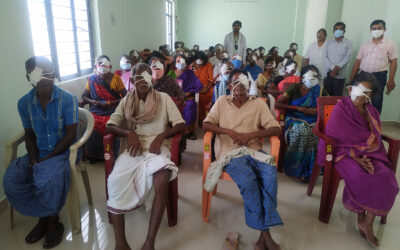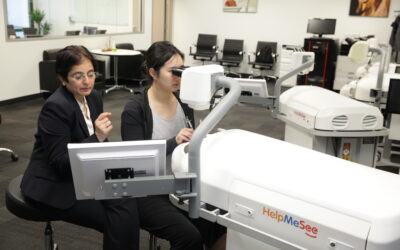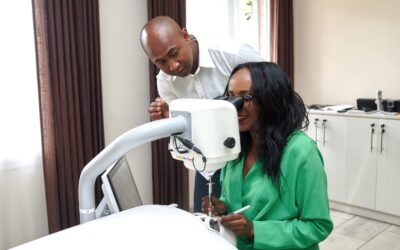Around the world, millions of individuals suffer from cataract blindness—a condition that is preventable and treatable. About 90% of those affected by cataract-related visual impairment live in developing countries and have significant geographic and economic hurdles to overcome to receive adequate eye care. (1,2)
World Sight Day was on October 10, and it’s crucial to recognize the transformative power of training cataract surgeons in these regions, where an increased access to eye care can make a profound impact on not only individual’s quality of life but the community at large.
In lower- and middle-income countries, Manual Small Incision Cataract Surgery (MSICS) is a procedure that is changing lives and addressing cataract blindness. This safe procedure requires minimal resources while providing high-quality visual outcomes similar to phacoemulsification cataract surgery, a standard technique that requires more expensive equipment and resources. With each surgeon who learns to perform MSICS, the ripple effect of their training reaches far beyond the operating room, touching families, communities, and economies.
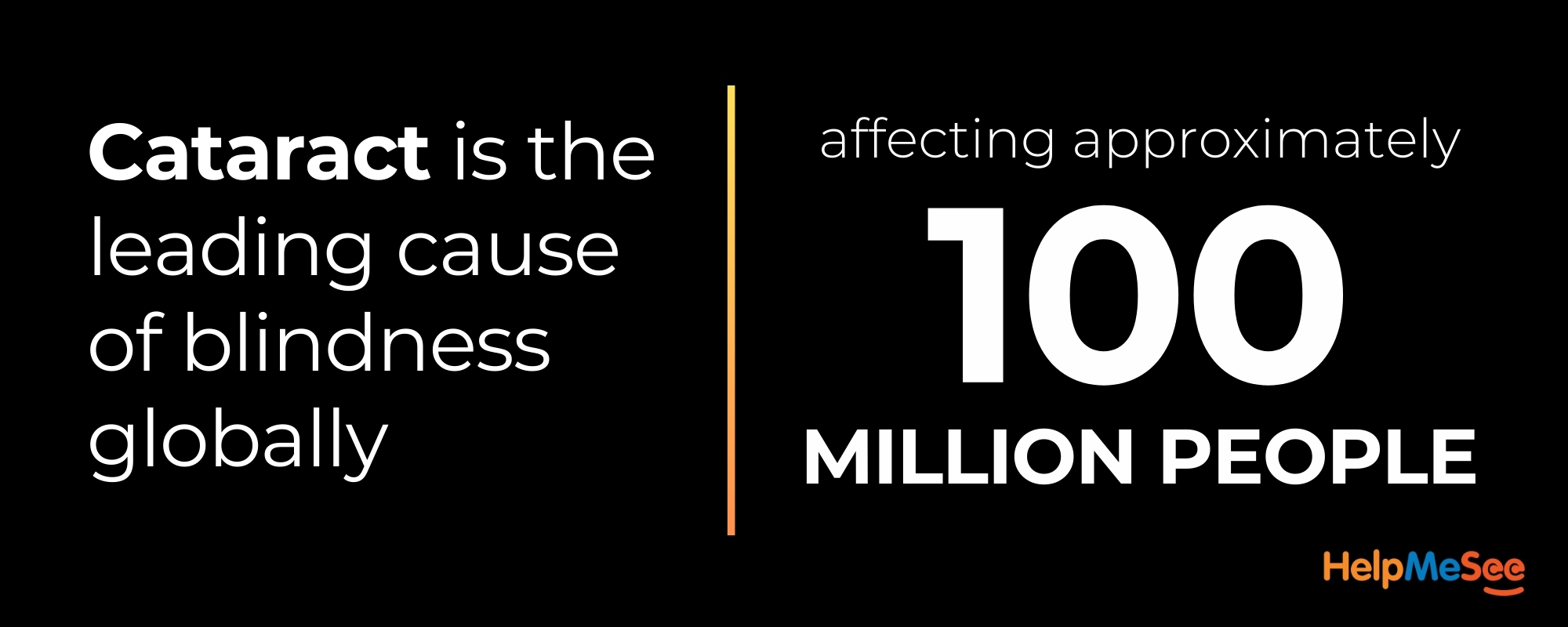
The Growing Crisis of Cataract Blindness
Cataract is the leading cause of blindness globally, affecting approximately 100 million people. (3) The challenge is especially acute in low-resource areas where surgical care is limited. World Sight Day brings much-needed attention to the global eye health crisis, emphasizing that every person deserves the right to sight. It’s a day to unite behind the mission of preventing and curing avoidable blindness, and it’s a moment to reflect on how we can contribute to true measurable change.
In addition to the cost barriers and lack of facilities in underserved countries, another hurdle to increased access to eye care is the growing shortage of trained cataract surgeons relative to patient demand and substantial geographic disparities. (4) Reproducible surgical training modules, therefore, are more important than ever before to bridge the gap between the number of individuals suffering with cataract blindness and the increasing surgeon shortage.
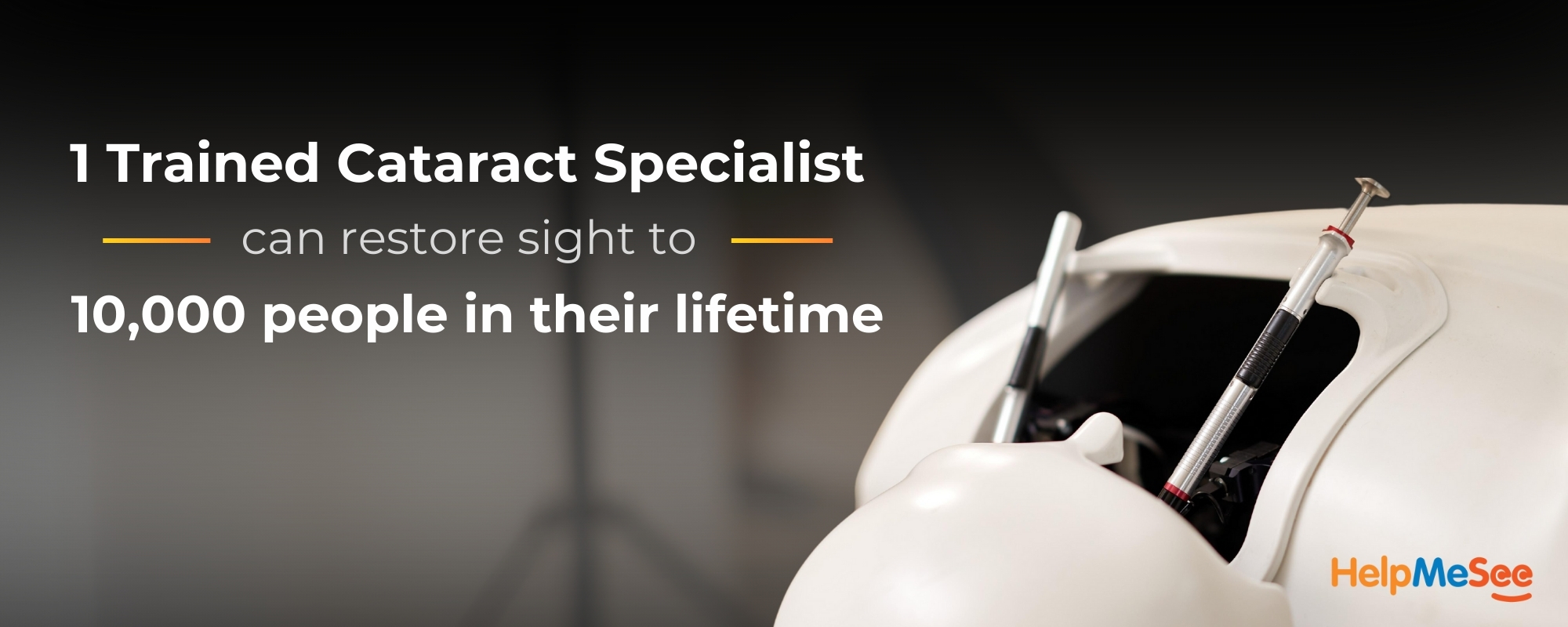
MSICS is Essential
MSICS is an essential skill for all trained cataract surgeons, especially those practicing in underserved communities. Those who train in MSICS can carry out high-volume surgeries, addressing the needs of entire communities.
For more than a decade, HelpMeSee has pioneered simulation-based training to teach MSICS, allowing surgeons to practice their skills in a safe, controlled environment. With haptic feedback VR technology, aspiring surgeons can gain valuable experience without risking patient safety. This approach not only accelerates training but also ensures a higher quality of care.
Potentially one trained surgeon can perform thousands of surgeries over their career, restoring sight and improving the quality of life for entire communities. The ripple effect of sight restoration touches every aspect of life. It allows individuals to return to work and contribute to economic output, care for their families, and participate fully in their communities. For young children, they can return to school in the hopes of becoming productive members of society. The economic and social benefits of increased access to eye care are profound.
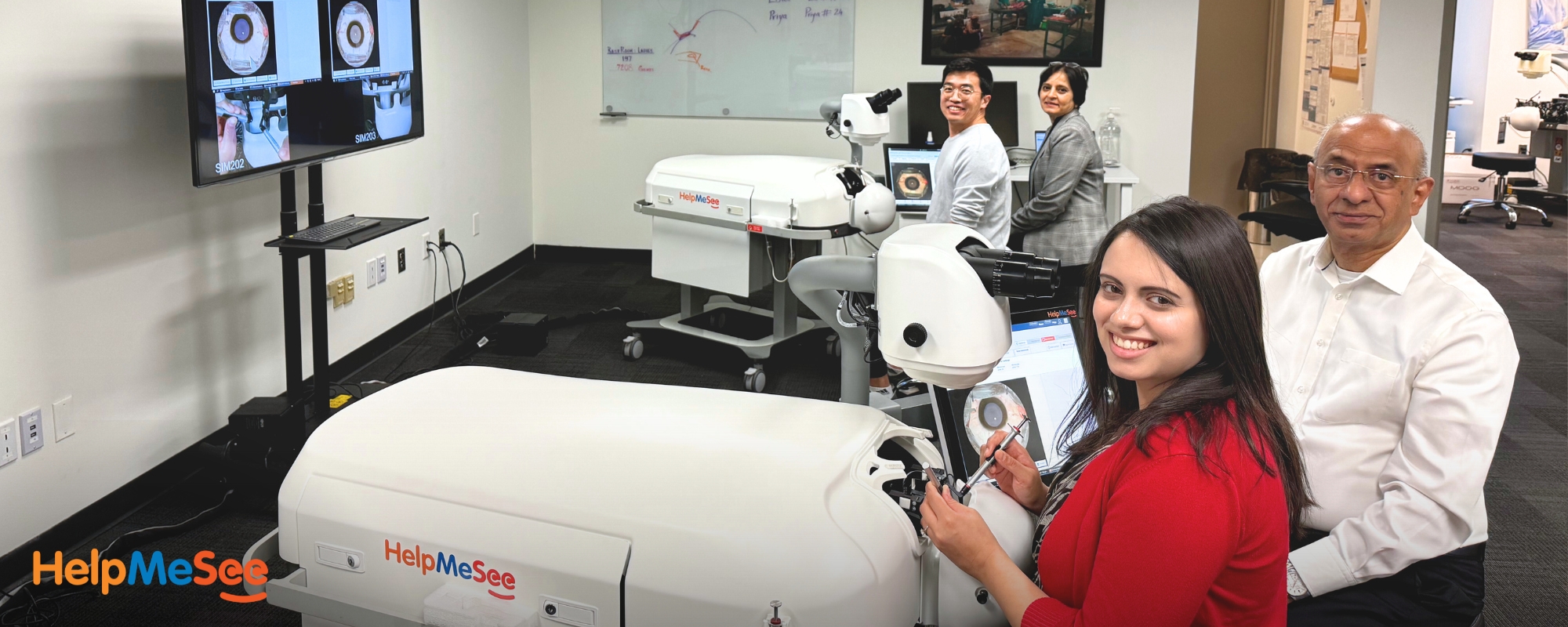
How You Can Help
Don’t leave your support restricted to only World Sight Day. We invite you to join the fight against preventable blindness in any of the following ways.
Donate. Your contribution can fund simulation-based MSICS training in low-resource areas, ensuring that more patients receive sight-saving, life-changing surgery.
Raise awareness. Share information about cataract blindness and the importance of MSICS training with your network. The more people know, the more support we can generate for this cause.
Partner with us. Whether you are part of a corporate group or a humanitarian organization, we welcome partnerships that amplify the impact of our training efforts.
Together, we can empower surgeons to bring vision back to the millions who are waiting for their sight to be restored. With your help, we can create a ripple effect of change—one surgeon, one surgery, one community at a time.
Learn More About Training in Your Region
Instructor-led Simulation-based Training Courses
Learn More About Training in Your Region
Instructor-led Simulation-based Training Courses
Learn More About Training in Your Region
Instructor-led Simulation-based Training Courses
HELPMESEE SPONSOR’S








- Orbis International. Global blindness was slowing prior to pandemic study reveals. Accessed September 18, 2024. https://www.orbis.org/en/news/2021/new-global-blindness-data
- International Agency for the Prevention of Blindness. 1.1 billion people live with vision loss. Accessed September 18, 2024. https://www.iapb.org/learn/vision-atlas/
- World Health Organization. Blindness and vision impairment. August 10, 2023. Accessed September 18, 2024. https://www.who.int/news-room/fact-sheets/detail/blindness-and-visual-impairment
- Berkowitz ST, Finn AP, Parikh R, Kuriyan AE, Patel S. Ophthalmology workforce projections in the United States, 2020 to 2035. Ophthalmology. 2024;131(2):133-139.
RECENT NEWS
Increasing Cataract Surgery Access: Mission Critical
Individuals with cataract-related vision loss or blindness may mistakenly believe that their condition is permanent. The truth is, however, cataract...
The Power of Cataract Simulation-Based Surgery Training
Virtual reality–based surgical simulation-based training is a win-win for residents and residency program directors. It can be used to teach vital surgical skills…
Embarking on a Life-Changing Journey
Cataract surgical training is evolving. While most residency programs use an apprenticeship model, allowing trainee surgeons to progress…


